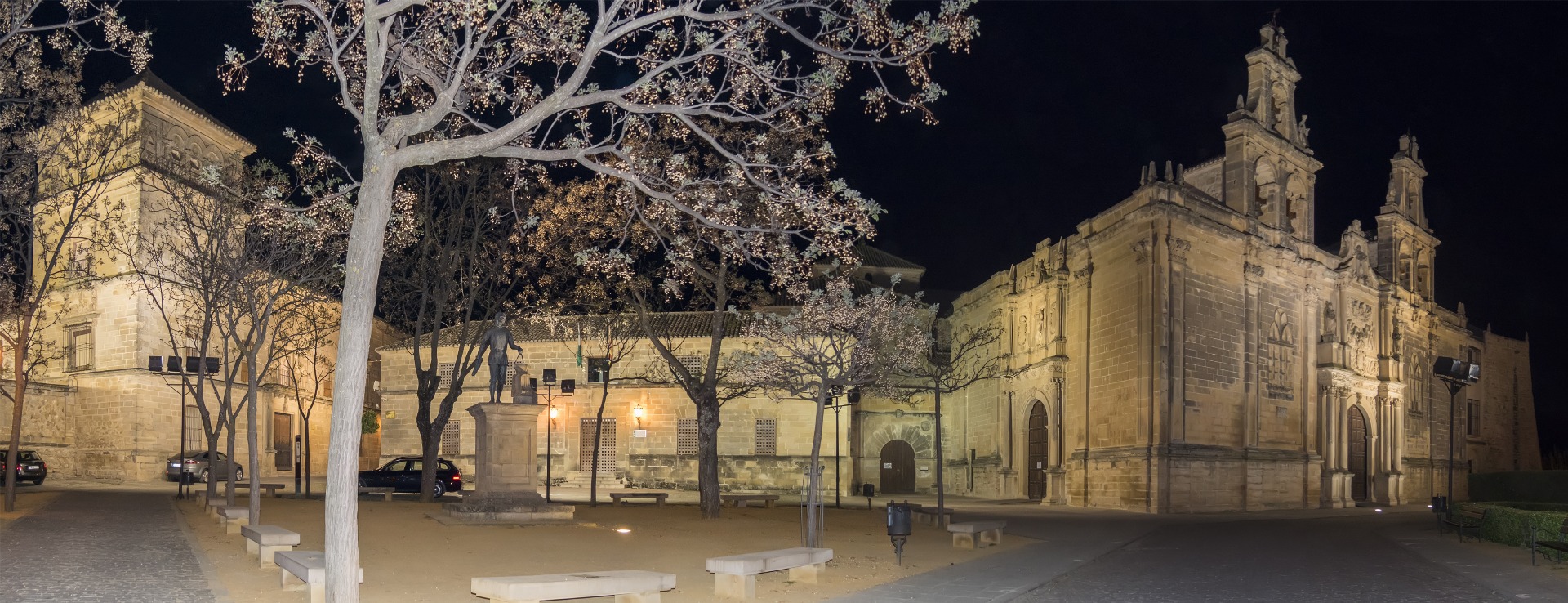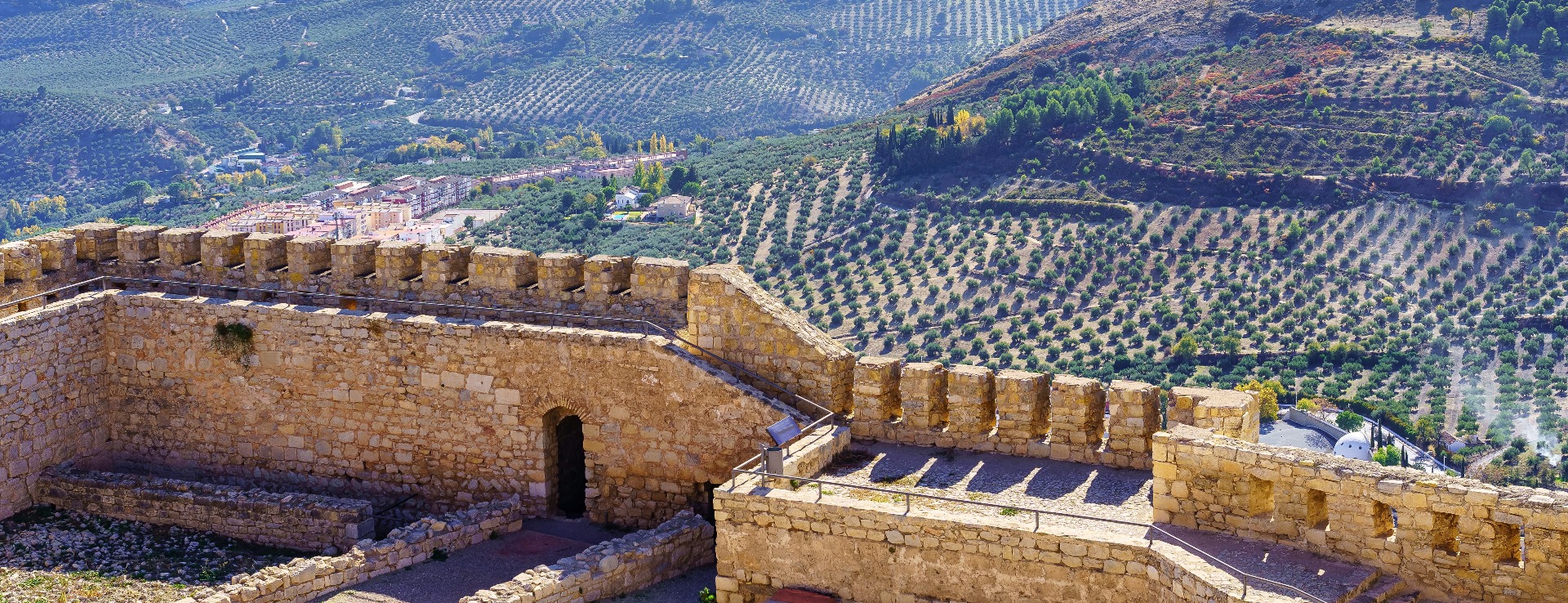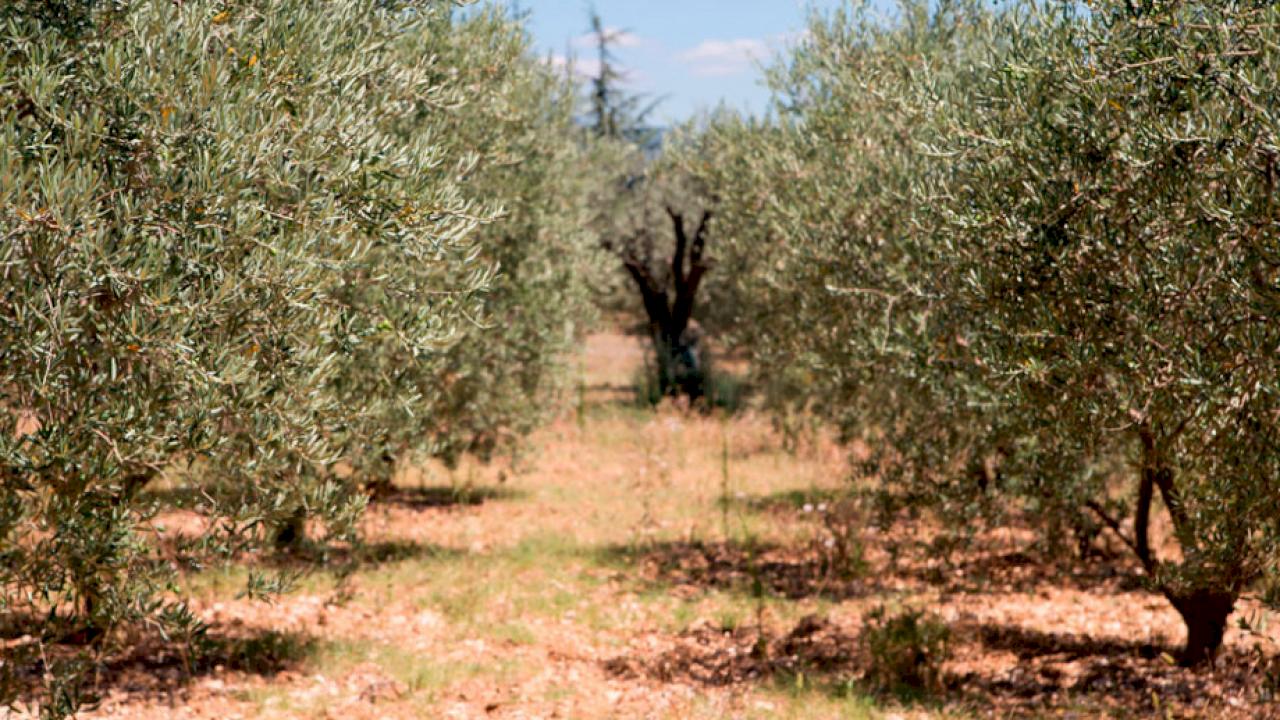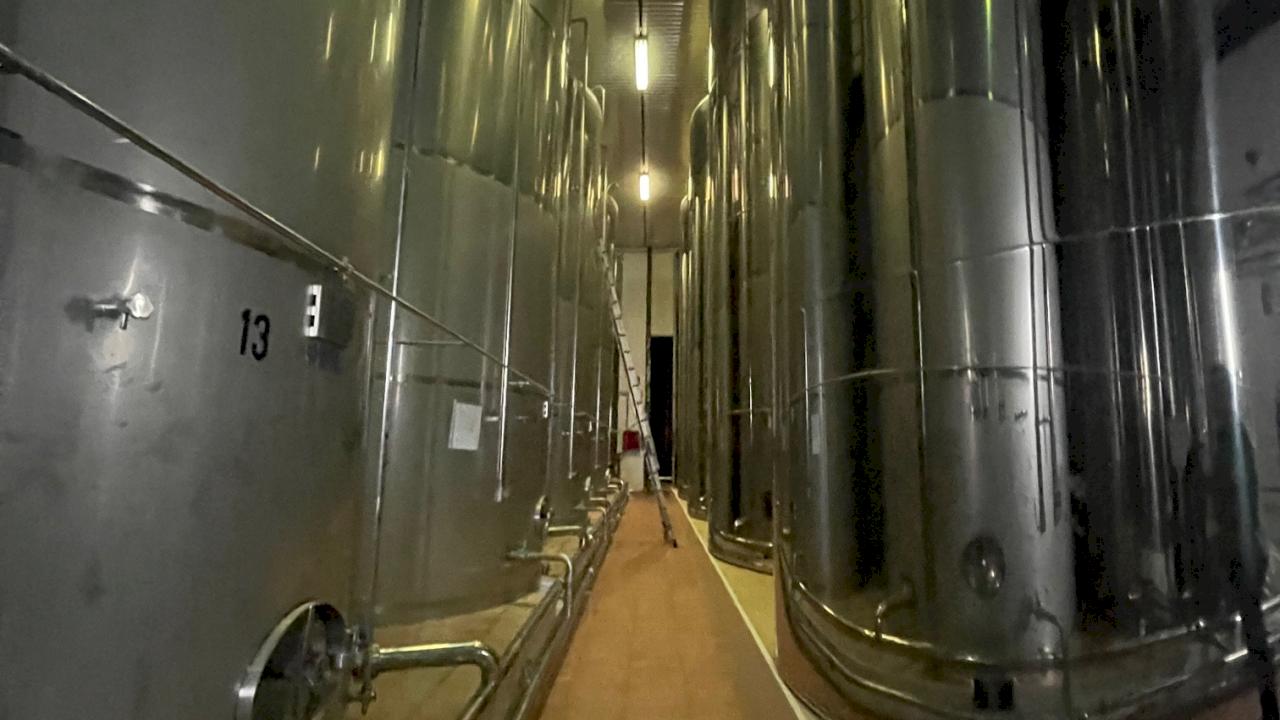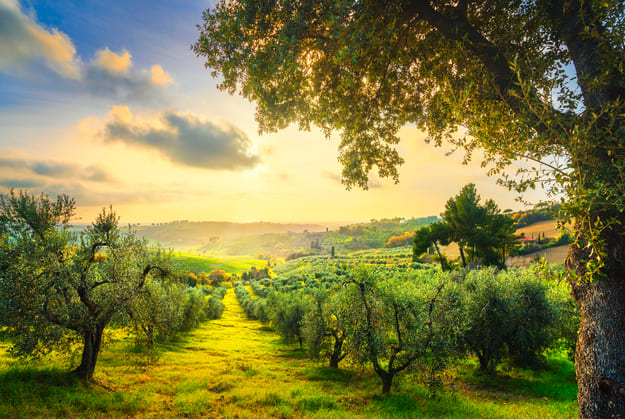Find your olive grove or oil mill
8 Olive groves and oil mills for sale in Jaén
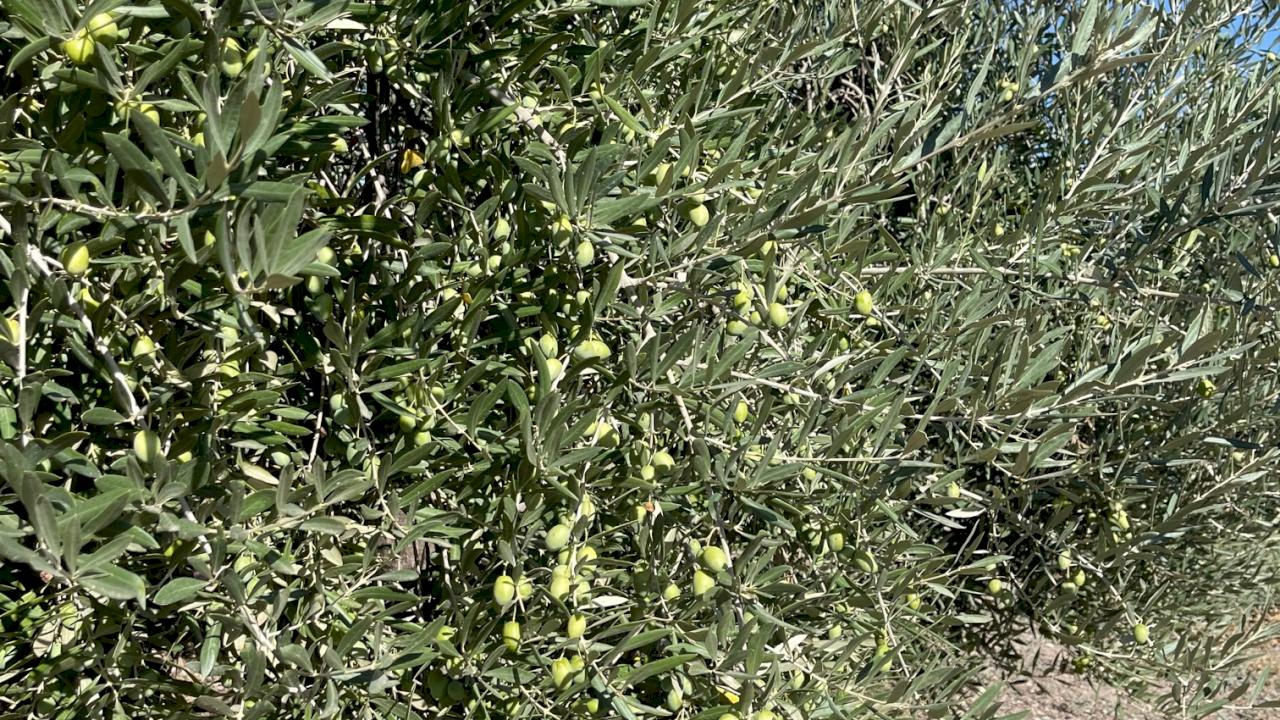
Olive grove with 550 ha olive grove, olive mill and farmhouse.
Estate in Designation of Origin of Jaen.
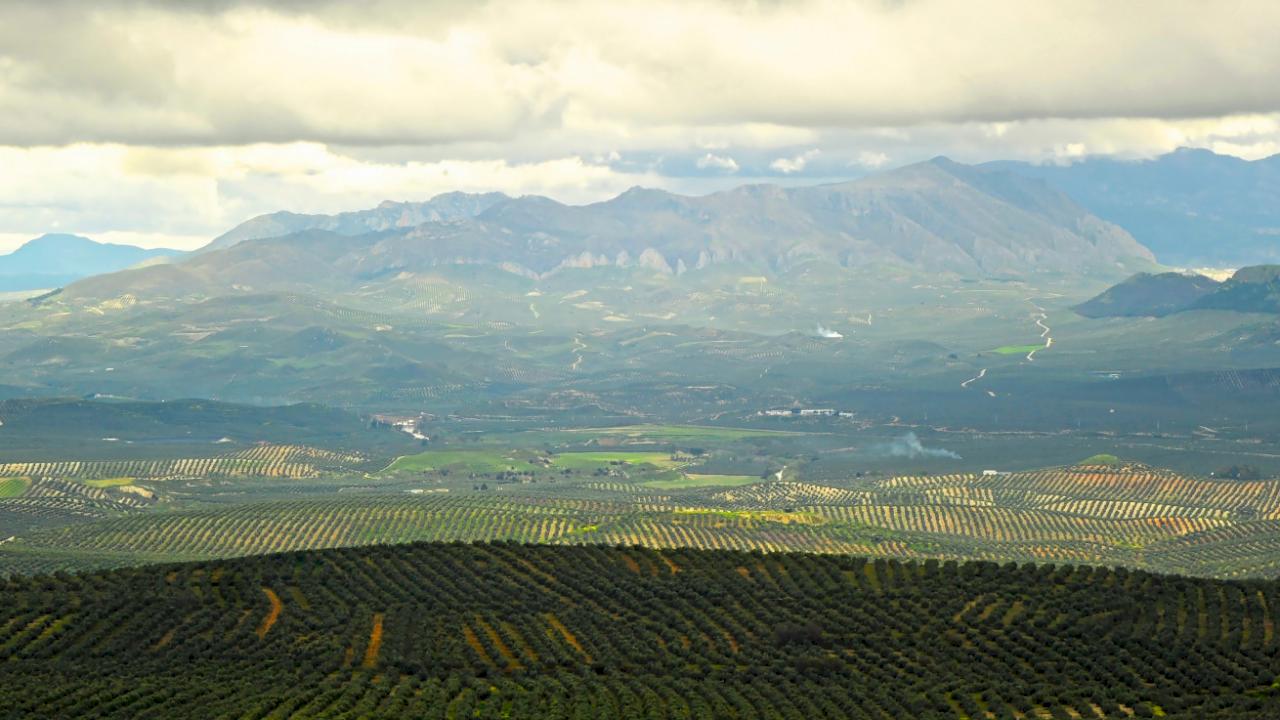
Farm 500 ha of olive trees, partly traditional and partly intensive and oil mill.
In the countryside of Jaen
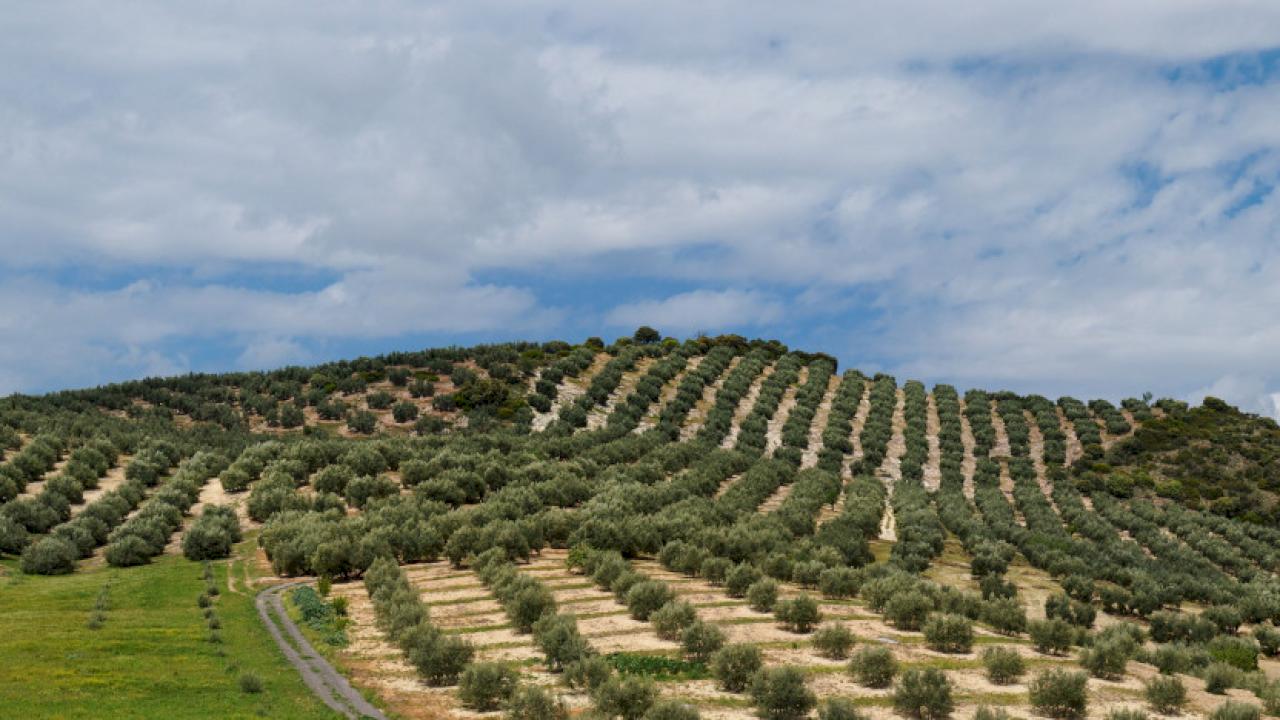
Spectacular 300 ha farm with farmhouse and mill.
Half an hour from Jaen and 50 minutes from the airport.

Farm with farmhouse and 64 hectares of olive trees.
DO Sierra Cazorla in Jaen.
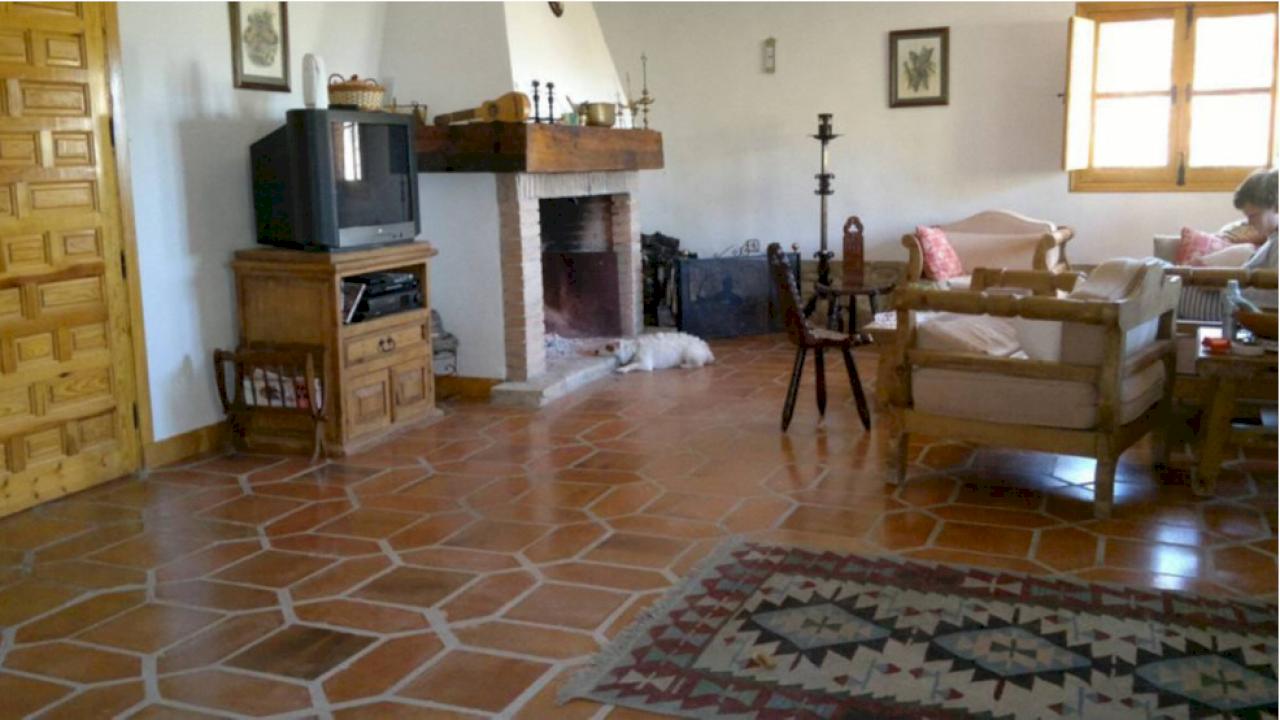
130 hectare farm with 18 hectares of olive trees and a new farmhouse.
DO Sierra Mágina
Infographic of the area

Jaén
In the province of Jaén there are several olive oil DOs, DO Sierra de Segura, DO Sierra de Carzorla, DO Sierra Mágina, DO Campiñas de Jaén and DO Sierra Sur.
Jaén with 40% of the surface area and Córdoba with another 24% are the two main olive oil producing provinces in Andalusia. Between the provinces of Jaén and Córdoba, 64% of all the annual olive oil produced in Spain is produced.
DO Sierra de Carzorla
The agricultural region of the "Sierra de Cazorla" is located next to the Natural Park of the Sierra de Cazorla, in the southeast of the province of Jaén, bordered to the northeast by the "Sierra de Segura", to the north by the Upper Guadalquivir Valley, to the southeast by the high plains of Baza and Huescar (Granada), to the east by the province of Granada and to the west by the Sierra Mágina and Montes de Jaén.
The municipalities of this DO are Olivares de Cazorla, Chilluévar, Hinojares, Huesa, La Iruela, Peal de Becerro, Pozo Alcón, Quesada and Santo Tomé, all of which have their roots in this green treasure. It is precisely this unique territorial identity, where the countryside intermingles with the mountains, that is the main argument for obtaining these olive oils of incomparable sensory magnitude.
Varieties
Jaén is a land of Picual, and obviously it could not be missing in this environment, but together with this variety there is also a variety that is native to the area and unique in the world, the Royal, from which oil of the highest quality is obtained, which stands out for its marked personality in the fruitiness and with subtle hints of spiciness and bitterness. Cazorla has around 40,000 ha of olive groves. The olive groves in this DO are not homogeneous; there are olive groves almost simultaneously in the countryside and in the mountains with different degrees of phenological progress, which results in oils with their own characteristic organoleptic properties. One characteristic of these oils is their slight bitterness, caused by the presence of natural anitoxidants, which makes them very stable oils rich in vitamins A, D, E and K.
History
Oil has been produced in the Sierra de Cazorla for more than seven centuries, as can be seen from various documents. The establishment of the olive grove in the province of Jaén was of great economic importance, but also of great scenic importance, as it shaped the image of the sierra.
The most recent news after the conquest and repopulation of the area by Ferdinand III in the 13th century comes from the documentation of the town of Quesada during the centuries of the late Middle Ages. The large plantations of olive trees create a unique landscape that has not gone unnoticed by travellers.
Climate and soils
The area is rugged due to its location in the heart of the pre-Baetic mountain range. The relief of the area is mostly hilly, with steep slopes. The Sierra de Cazorla is made up of four mountain ranges, virtually parallel, with their longitudinal axis running north-south and folds running east-west, and where we find peaks such as the Cerro de Las Empanadas (2,106 metres).
In terms of soils, we find the Entisols (the most recent and least evolved), Inceptisols (developed on limestone, with an alkaline character) and Alfisols (with a clay accumulation horizon). The soils are alluvial with sandy and silty formations. In other areas there are limestone and clay soils.
The climate is mild continental, with temperatures ranging between 4º C and 23º C, although, due to the mountainous area in which the appellation is located, more extreme temperatures can be encountered. The climate is characterised by average temperatures of: spring 16ºC, summer 23ºC, autumn 13ºC, and winter 4ºC.
The annual rainfall varies between 600 mm and 1000 mm.
Oil mills
S.C.A. Santo Tomás Apostol, S.C.A. Ntra. Sra. De la Encarnación, Hacienda Vadolivo, S.C.A. Aceites Cazorla, Aceites Guadalentín S.L., S.C.A. La Unicón de Chilluévar, Casería Sta Julia Aicex, Explot. Agro. Trame Almazara Rotalaya, S.C.A. La Bética aceitera, S.C.A. Ntra. Sra. De la Cabeza.
Sierra Mágina DO
The fifteen municipalities included in the territory protected by the Sierra Mágina Designation of Origin are: Albanchez de Mágina formerly known as Albanchez de Ubeda, Bedmar y Garcíez, Bélmez de la Moraleda, Cabra del Santo Cristo, Cambil-Arbuniel, Cárcheles, Campillo de Arenas, La Guardia de Jaén, Huelma-Solera, Jimena, Jódar, Larva, Mancha Real, Pegalajar and Torres. Some of them are included in the Sierra Mágina Natural Park and others belong to its surroundings.
The region of Sierra Mágina is located in the central-southern part of the province of Jaén, in the surroundings of the mountainous massif of Mágina, which gives it its name. It has approximately 60,000 hectares of olive groves, with an average gradient of over 15%, and with a balanced proportion of dry and irrigated olive groves.
Varieties
The predominant variety is Picual, although the secondary olive variety Manzanillo de Jaén is permitted. In recent years, with the start of the harvest being brought forward to October and advances in milling techniques, Picual extra virgin oils have won the most important national and international quality awards.
The low productivity of this sloping olive grove makes it less competitive than the olive groves of the countryside, with higher harvesting costs, so its future lies in directing the work of olive growers and mills towards high-quality extra virgin oils, in order to achieve a differentiation in the market that compensates for these production handicaps, and to ensure the survival of this activity, which is so important for these municipalities.
Their high polyphenol content, as well as corroborating their high stability, indicates the existence of very fruity oils with great personality.
History
The Sierra Magna, the Sierra Grande or Sierra Mágina, as some of the writers who have passed through it call it, has been the home and inn of diverse cultures and civilisations throughout the ages.
The nearby presence of the Guadalquivir valley and the existence of numerous river basins were decisive elements for its occupation, and there are numerous archaeological remains and traces of the past in these lands. Important Iberian remains have been found in Albánchez, Torres and Cerro Alcalá.
Climate and soils
Arranged in a circular shape around the mountain massif that gives it its name, due to its location in the southern centre of the province of Jaén, the high plateaus of Los Montes and the valleys of the Jandulilla, Guadiana Menor and Guadalquivir, these lands have been a natural passageway for communications between the interior and the coast.
Autumn, with its changes, allows us to appreciate in the countryside an overflowing variety of colours: ochres, reds and browns are the contrast to the intense greens of spring. In winter, as well as during most of the spring, it is common to find snow on its peaks, here we find the highest elevations in the province: Pico Mágina, at 2,167 metres; Pico Cárceles, at 2,059 metres or Almadén, at 2,032 metres.
The orography of the terrain is due to the contrasts between the relief of the massif, where the Sierra Mágina Natural Park is located, and the gentler areas that surround it, occupied by olive groves.
Climate
Due to its location, we find ourselves in a Mediterranean area, with especially pleasant seasons in spring and autumn, suitable periods for resting in these places. Likewise, the warmer summers are easily tolerated in villages such as Albanchez or Torres, or in cooler places such as Cuadros, Fuenmayor, Hútar or Cabrita.
The climate can be classified as subtropical and temperate, with an average annual temperature of 13-17º C and an average annual rainfall of between 400 and 800 mm.
The minimum temperatures are 4 or 5ºC below zero and the average annual temperature is 16ºC.
The lack of rainfall is made up for by the area's large hydrographic network, which makes irrigation possible.
Almazaras
SCA San Francisco, SCA Bedmarense, SCA Ntra. Sra. de la Asunción, SCA Ntra. Sra. de la Paz, SCA La Unión del Santo Cristo, Avirol SL, SCA Trujal de Mágina, SCA Ntra. Sra. del Rosario, SCA Unión Oleícola de Cambil, SCA Ntra. de la Cabeza, SCA San Antonio Aba, SCA San Roque, SAT Ntra. Sra. del Camino, SAT La Concepción, SCA San Isidro Labrador, SCA Ntra. Sra. de los Remedios, SCA Ntra. Sra. Pilar del Andaraje, Stmo. Cristo de la Misericordia SCA, SCA San Sebastián, Monva SL, Oleozumo S.L., Aceites Campoliva SL, SCA San Juan Bautista, SCA Santa Isabel.
Sierra de Segura DO
The production area of the oils covered by the Sierra de Segura Designation of Origin comprises the municipalities of Arroyo del Ojanco, Beas de Segura, Segura de la Sierra, Benatae, Chiclana de Segura, Génave, Hornos de Segura, La Puerta de Segura, Orcera, Puente de Génave, Santiago-Pontones, Siles, Torres de Albanchez and Villarrodrigo, all of which belong to the province of Jaén. The area of protected olive groves covers some 40,000 hectares belonging to more than 8,000 registered farmers. The average production in the area exceeds 20 million kg of oil.
Varieties
The "Sierra de Segura" Denomination of Origin has a historic olive grove, around 80% of which is between 75 and 100 years old. The olive grove is almost exclusively of the Picual variety (97%) together with scattered olive trees of the Verdala, Royal and Manzanillo de Jaén varieties.
The region has had its own personality since ancient times, when it was inhabited by the Phoenicians, Greeks and Romans and acquired the status of an independent kingdom with the Muslims. After the Christian conquest, the region enjoyed a special status that allowed its people to administer their own land. Olive growing has always been the most important economic activity throughout the ages.
Climate and soils
High mountain olive groves at altitudes of over 900 metres, with scarce, poor and very superficial soil, often formed by the exclusive decomposition of the bedrock itself, combined with a fairly irregular climate, which produces quite a few ups and downs in temperature and an average annual rainfall higher than the average for the province of Jaén, This microclimate, while producing oils of the picual variety, the majority and almost exclusive variety in the province of Jaén, is the area of the Sierra de Segura, where the characteristics of the varietal personality are shown in a particularly generous way.
The soils belong to the secondary era, with lithosols on Mesozoic limestone. Generally, the soils on the slopes are very superficial, sometimes formed by the decomposition of the bedrock itself, while in the valleys the soils are poorer in limestone and organic matter, with slightly acidic Triassic sandstones. The climatology of the area is quite irregular, with a predominantly continental Mediterranean climate influenced by the subtropical Mediterranean. The average annual temperature is between 11 and 18ºC, ranging from a peak of 35ºC in the summer months to -4.5ºC in the coldest month. The average annual rainfall is 500 to 700 mm, well above the provincial average.
Mountain olive groves have lower yields and higher production costs. However, on the other hand, it has a higher rainfall and milder summers, and harvesting techniques are used to avoid contact between the olives and the ground. All this contributes to obtaining a Picual with character, oils with their own identity. Lower temperatures, steeper slopes, higher altitude, higher rainfall and also lower yields mark the quality of extra virgin olive oils.
Olive oil mills
Aceite de Cospedal, Aceites el Carrascal S.A., Aceites Málaga S.L., Aceites Rama S.C., Antonio González Lozano, Arte Oleum AOVE SL, Asociación de Productores Ecológicos Oleaí, Cárnicas La Celestina, S.L., Centros Comerciales Carrefour, Eroski Coop., Francisco Fernandez Herreros, Gregorio Ojeda Martinez, Horticultura Puertocarrero, Jaencoop SCA 2º grado, Juan Diego Mota Chinchilla, Maria Rosa Frías Cazorla – Jose Vicente Ortiz Leal, Ménfer Agrícola Costa SLU, Mercedes Martin C.B., Molino de Segura S.A., Oleofer S.L., Oleosegura S.L., Olivarera Santa Ana, Oliventresierras Fuentes Ibañez S.L., Panarcos Internacional S.L.U., Pedro Marín Martínez, Potosí 10 S.A., S.C.A Castillo de Hornos, S.C.A Ntra. Sra. de los Milagros, S.C.A Ntra. Sra. de Nazaret, S.C.A San Bartolomé, S.C.A. Agrícola Ntra. Sra. Virgen del Campo, S.C.A. Agrosegura, S.C.A. Gutamarta, S.C.A. La Vicaría, S.C.A. Ntra. Sra. De la Asunción, S.C.A. San Francisco, S.C.A. San Isidro Labrador, S.C.A. San Isidro Labrador, S.C.A. San Juan Bautista, S.C.A. San Juan de la Cruz, S.C.A. Sierra de Génave, S.C.A. Virgen del Campo, The Green Gold Olive Oil Company y Zorrilla Garcia Agustín.
DO Campiñas de Jaén
It occupies the very centre of the southern half of the Iberian Peninsula, in the province of Jaén.
Municipalities that make up the region: Aldeaquemada, Andújar ( the land not included in the Sierra de Andújar Natural Park), Arjona, Arjonilla, Arquillos, Baeza, Bailen, Baños de la Encina ( the land not included in the Sierra de Andújar Natural Park), Begijar ,Canena, Carboneros, Cazalilla, Castellar, Escañuela, Espeluy, Fuerte del Rey, Guarromán, Higuera de Calatrava, Ibros, Iznatoraf, Jabalquinto, Jamilena, Jaén, La Carolina, Lahiguera, Linares, Lopera, Lupión, Marmolejo (land not included in the Natural Park Sierra de Andújar), Martos, Mengibar, Montizón, Navas de San Juan, Porcuna, Rus, Sabiote, Santa Elena (land not included in the Parque Natural de Despeñaperros), Santiago de Calatrava, Santisteban del Puerto, Sorihuela de Guadalimar, Torreblascopedro, Torredelcampo, Torredonjimeno, Torreperogil, Ubeda, Vilches, Villacarrillo, Villanueva del Arzobispo, Villanueva de la Reina (land not included in the Sierra de Andújar Natural Park), Villardompardo, Villatorres, in the province of Jaén.
Varieties
The varieties permitted to produce oils are Picual and Arbequina, although the former is the majority with 90% of the surface area. The oils are very stable and have an intense, fruity, slightly bitter and spicy aroma.
History
From a historical point of view, the oldest records of olive oil in the Jaén countryside date back to Roman times. However, until the beginning of the 16th century there are no references to the expansion of the olive grove in the province of Jaén. The expansion of olive growing in the municipalities of Jaén in 1879 can be considered the real starting point for the predominance of olive growing in Jaén. In the 19th century, the spread of the olive grove continued to use, preferably, land of inferior quality, marginal or mountainous terrain, which was not suitable for cereals.
Climate and soil
The orography of the geographical area of production has certain physical and agronomic peculiarities which contribute to the particular characteristics of the oils produced in this area. On the one hand, the genetic characteristics of the Picual variety, which is predominant in the area, and its good adaptation to the existing soil and climatic characteristics, its low resistance to detachment, which facilitates mechanised harvesting without bruising the fruit, and its high resistance to oxidation, which allows the sensory and nutritional characteristics to be preserved unaltered, while delaying rancidity.
The relief of the area is flat, with slopes of between 7-15%, with a gentle, undulating morphology in the foothills of the Sierra Morena, with a slight slope towards the Guadalquivir valley; its altitude varies between 200 and 800 m. The soils have a high altitude of between 200 and 800 m. The soil has a high altitude of between 1,5 and 2,5 km.
As for the soils, they have a homogeneous lithology on Miocene alluvial materials, developing soils with a calcium reserve of excellent agricultural suitability, most of which are used for olive groves.
The climate is continental Mediterranean, characterised by an average annual temperature of between 16 and 21 ºC, with the average minimum temperature in the coldest month being between 1 and 8 ºC, and the average minimum temperature in the warmest month being between 33 and 39 ºC, and an average annual rainfall of between 400 and 900 mm.
Oil mills with wine tourism in Jaén:
Aceites Castellar S.L. Castellar, Aceites Cazorla Soc. Coop. Cazorla, Aceites Florencio Aguilera S.L. Alcalá la Real , Aceites García Morón S.L. Arjonilla, Aceites Padilla S.L. Bailén , Aceites Samaria S. L. Linares , Almazara Cortijo el Madroño S.L. Martos , Almazara Cortijo Spíritu Santo S.L. Úbeda
Almazara Soler Romero S.L. Alcaudete , Coop. Ciudad de Jaén Soc. Coop. Jaén , Ntra. Sra. del Pilar Soc. Coop. Villacarrillo , Ntra. Sra. de los Remedios Soc. Coop. Jimena , San Amador Soc. Coop. Martos, Cortijo La Torre S. L. Arjona , Finca Eco. La Casona de Puerto Alto S.L. Pegalajar , Melgarejo S.L. Pegalajar , Oleícola San Francisco S.L. Begíjar ,Oleocampo Soc. Coop. Torredelcampo , OleoFer S.L. S.L. La Puerta de Segura, OleoRasa Tour S.L. Bailén S.L. Vva. de la Reina , Picualia Soc. Coop. Bailén, El Alcázar Soc. Coop. Baeza , Sierra de Génave Soc. Coop. Génave , Virgen del Perpetuo Socorro Soc. Coop. Alcaudete Thuelma S.L. Huelma
DO Sierra Sur
Jaén Sierra Sur is a geographical indication with a protected designation of origin for extra virgin olive oils that includes part of the Sierra Sur region, which comprises the municipalities of: Alcalá la Real, Alcaudete, Frailes, Fuensanta de Martos, Valdepeñas de Jaén, Los Villares and Castillo de Locubín.
Varieties
This extra virgin olive oil is made from the olives of the olive tree (Olea europea L) and only the following olive varieties are used: Picual (also known as Marteña and locally as Nevado), Picudo, Carrasqueño de Alcaudete, Hojiblanca and Lechín. Of these olive varieties, Picual, Picudo and Carrasqueño de Alcaudete are considered to be the main varieties.
The DO is characterised by the fact that it does not have a monovarietal structure, but rather different varieties are traditionally grown, of which the main variety is 'Picual', which accounts for 79% of production, and the secondary varieties are: 'Picudo', 'Carrasqueño de Alcaudete', 'Hojiblanca' and 'Lechín'.
Climate and soils
The area is characterised by great contrasts in terms of orography, with alternating areas of countryside, with average altitudes of around 500-600 m, and mountainous areas where the olive tree is grown at altitudes of around 1 000 m. The agrological environment is one of the most varied in the world. The agrological environment is one of the factors directly influencing the composition of the oils and their sensory characteristics.
Olive oil mills
SCA. San Isidro
Aceite Novecientos.
Olives
Subscribe to our mailing list to receive news about olive groves and oil mills.

